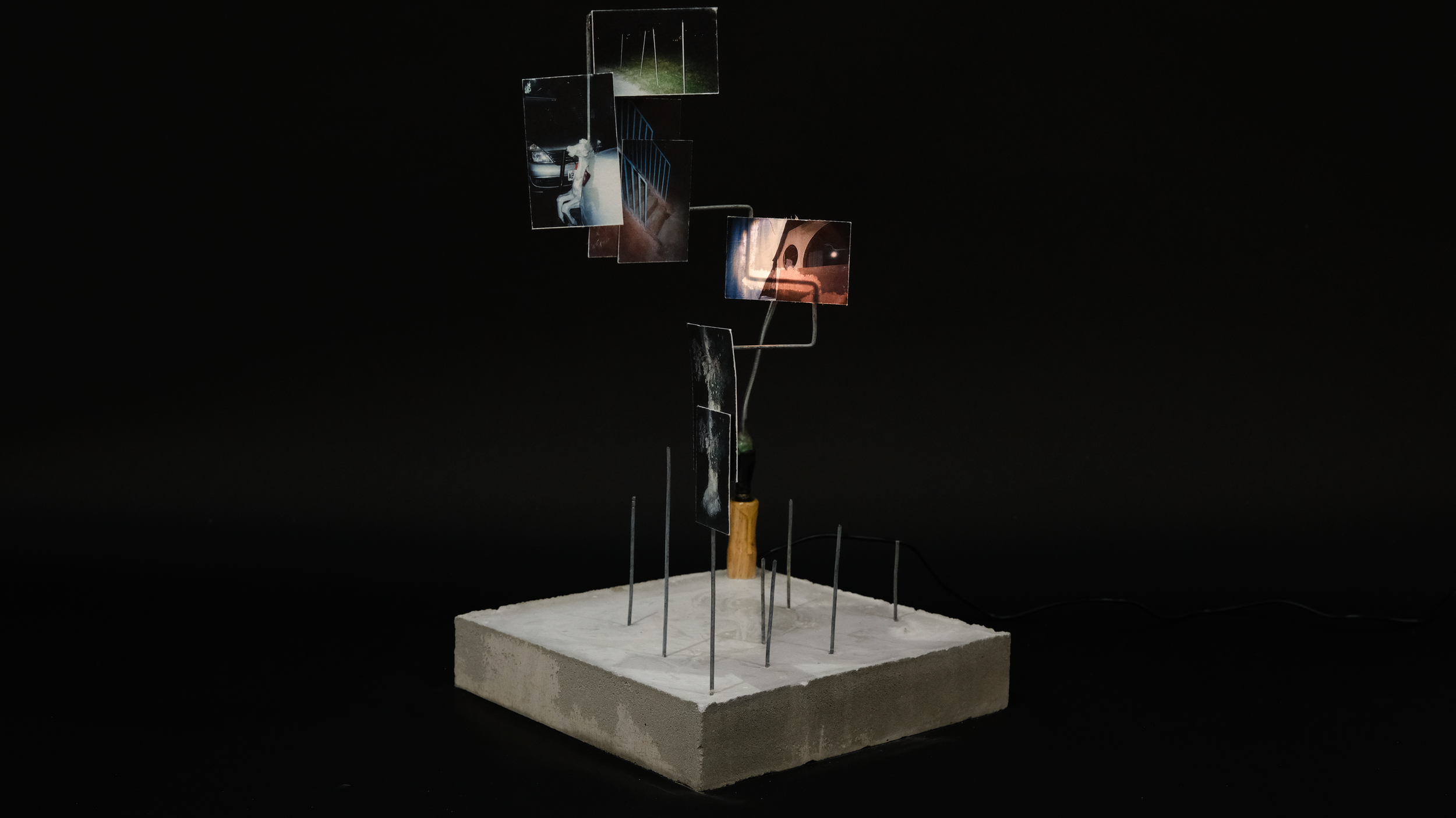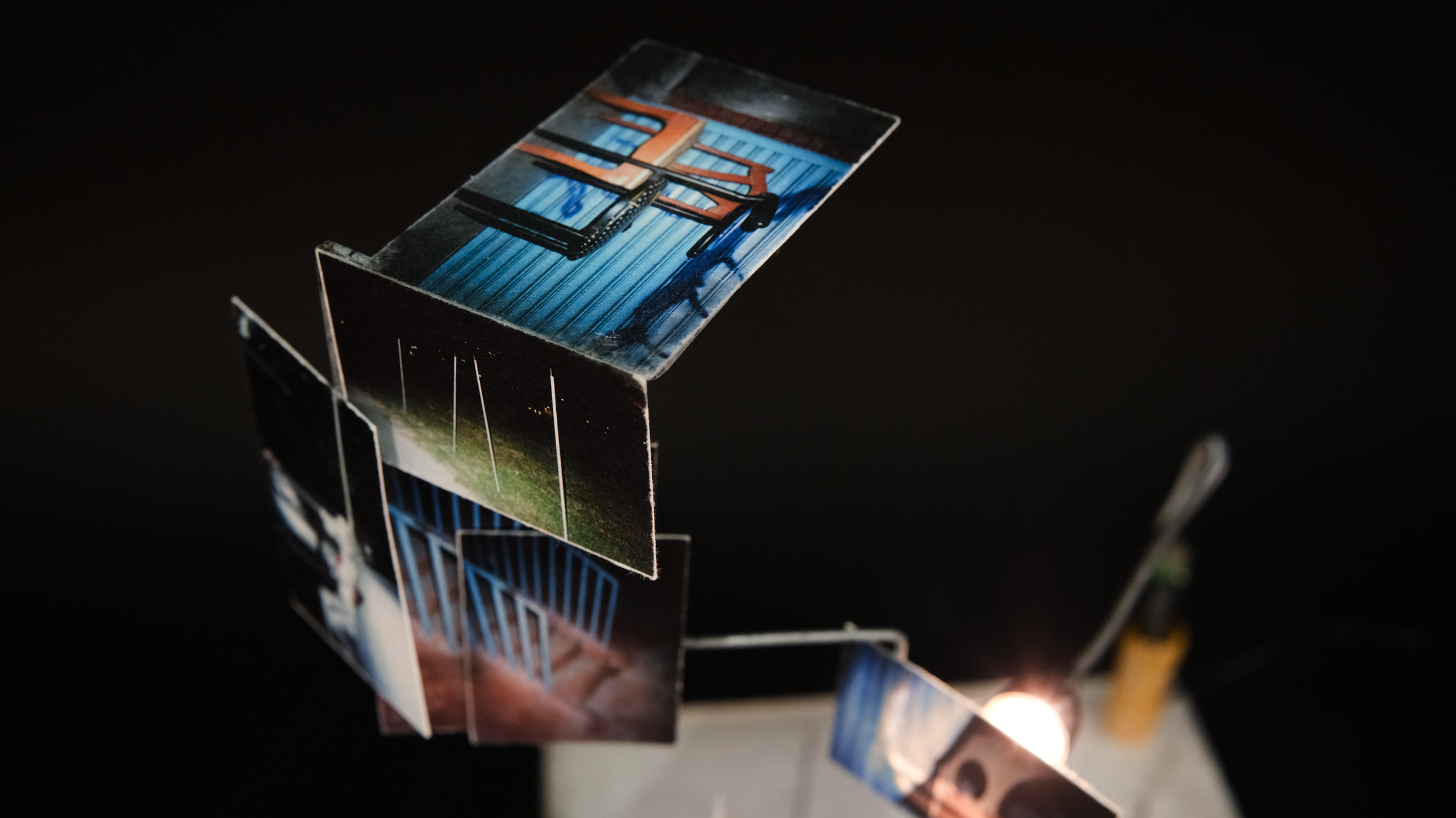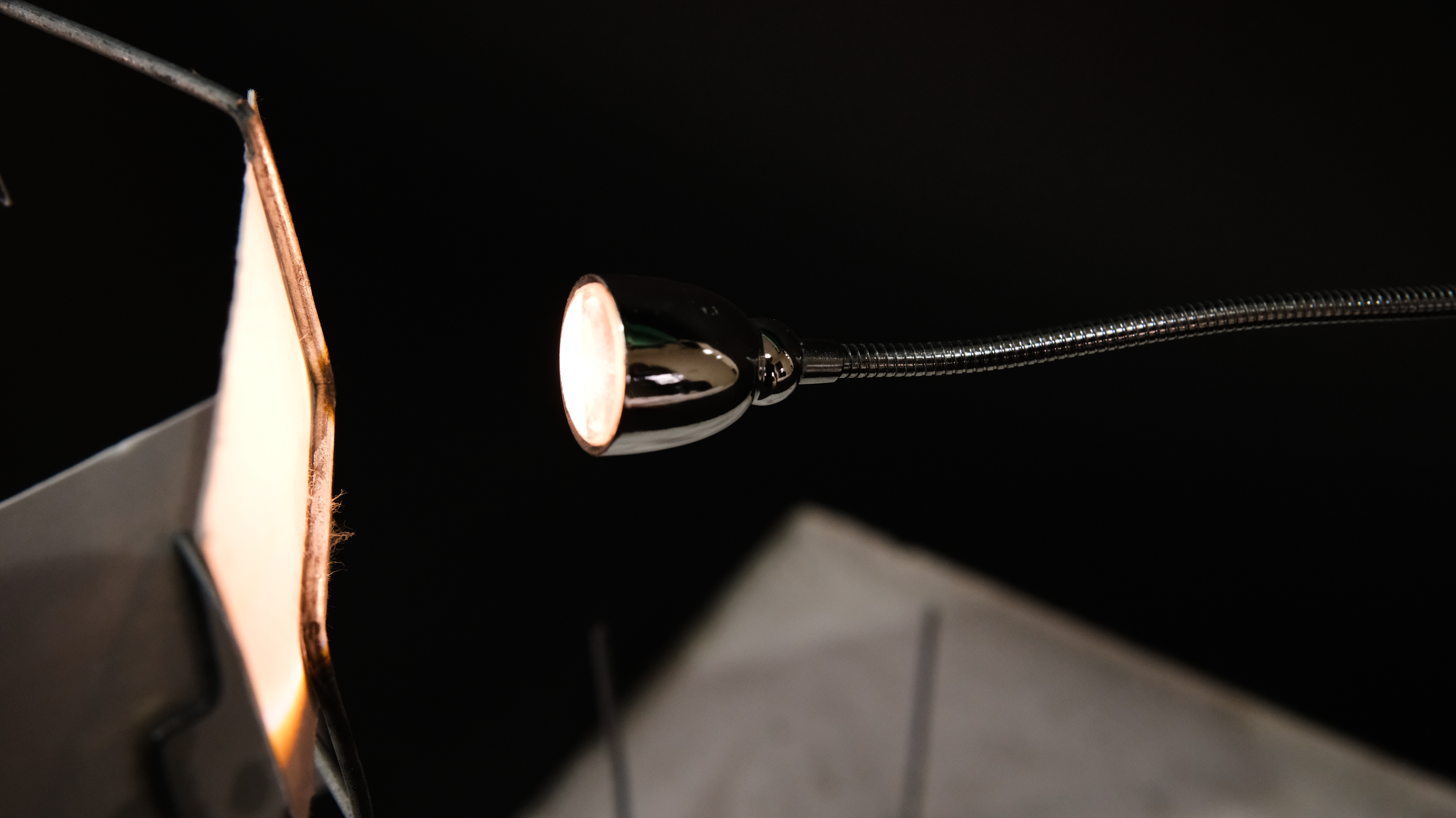
Selective Vulnerability
Selective Vulnerability
2025. Iron wires, Cement, Wood, Digital Print on Fiber Paper, Super glue, Found electrical components, Hose light
“Selective Vulnerability“ is an installation/sculpture that explores the selectively vulnerable nature of contemporary society. In an era where self-expression is often curated, vulnerability is no longer a raw exposure of the self but a controlled performance—revealed only in ways that align with personal or social narratives. This work questions the authenticity of such vulnerability: When we expose our flaws, struggles, and emotions, are we truly opening ourselves up, or are we merely shaping how we are perceived?
The installation consists of two primary components, both anchored on a cement base. The first is an iron wire structure resembling a plant, with film photographs growing at its ends. These photos are printed on highly absorbent, fiber-rich paper and affixed with super glue. Due to the nature of the material, every application of glue leaves visible traces—permanent marks of imperfection that cannot be undone. Any mistake in the process remains exposed, impossible to conceal. However, the arrangement of the photos ensures that they can never be viewed fully or all at once—there will always be a backside turned away, a misaligned angle, an obstructed perspective. These hidden or distorted images symbolize the fragments of imperfection that exist but are never entirely accessible.
The second element is a semi-movable light attached to the opposite end of the cement base. Though the light has some degree of movement, it is ultimately restricted. As the light shifts, it illuminates different sections of the plant-like structure, making the glue marks, imperfections, and textures even more visible. This shifting exposure represents vulnerability—the act of revealing one’s flaws under scrutiny. Yet, the controlled nature of the light’s movement introduces the element of selectivity. I dictate which mistakes, which traces of process, and which remnants of struggle are exposed and which remain unseen.
This work raises a critical question: Is this act of exposure genuine vulnerability, or is it a curated display—a method of maintaining control while presenting the illusion of openness? In contemporary society, we often reveal our weaknesses in ways that appear honest yet remain carefully constructed, shielding us from true rawness. Is vulnerability still vulnerability when it is orchestrated? Or does it merely become another form of self-preservation, an act of selective authenticity that blurs the line between sincerity and performance?
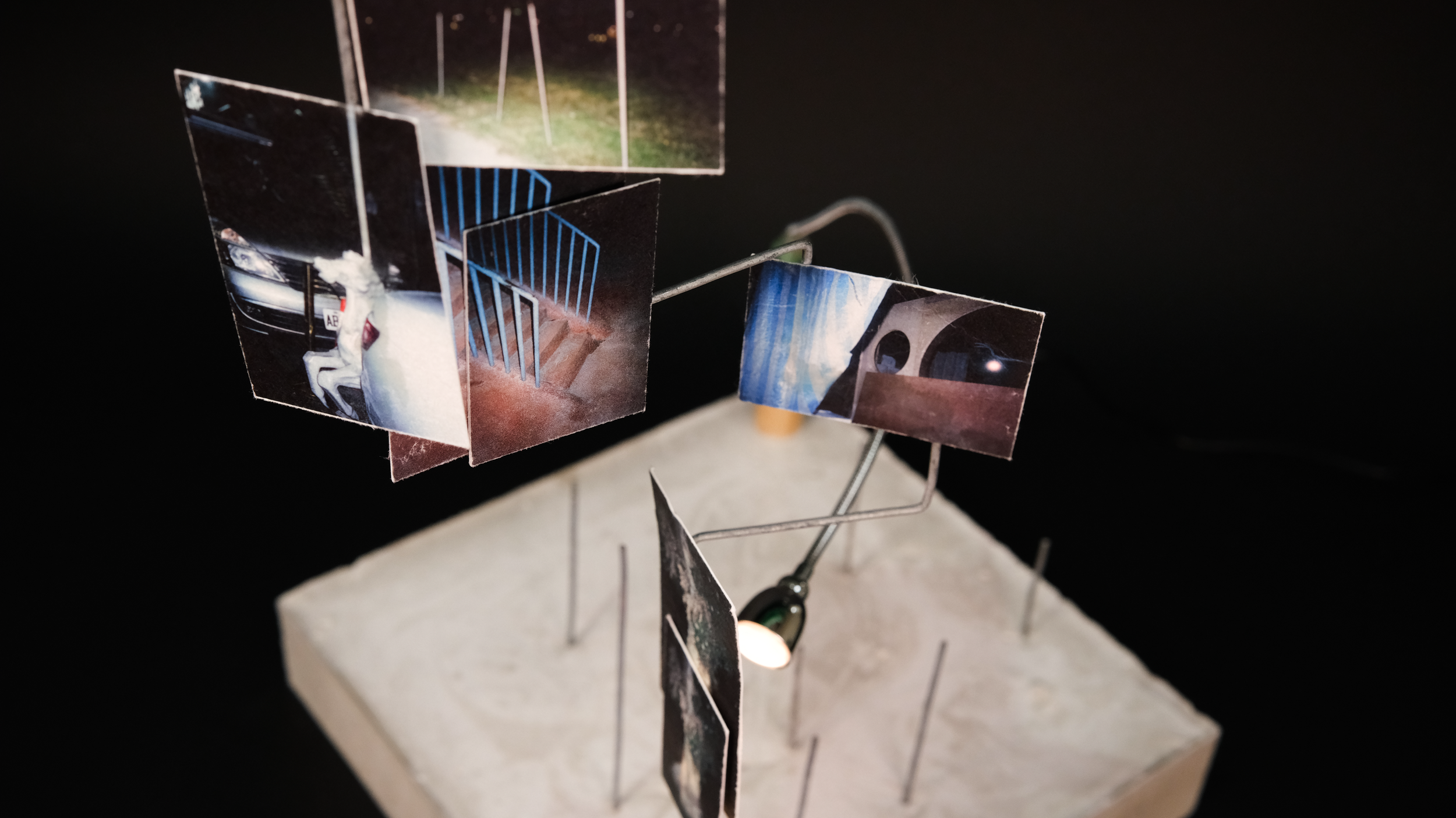
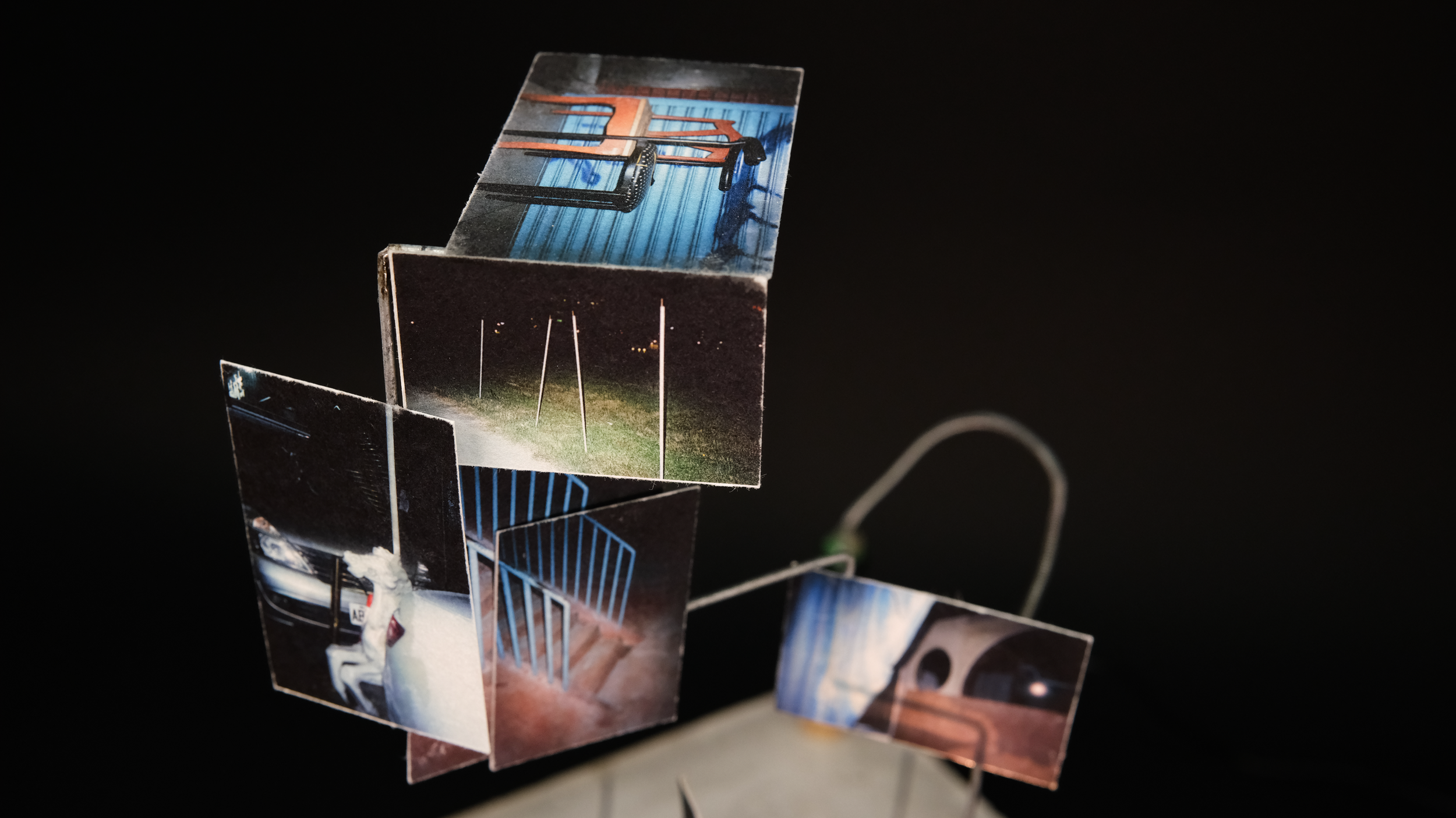

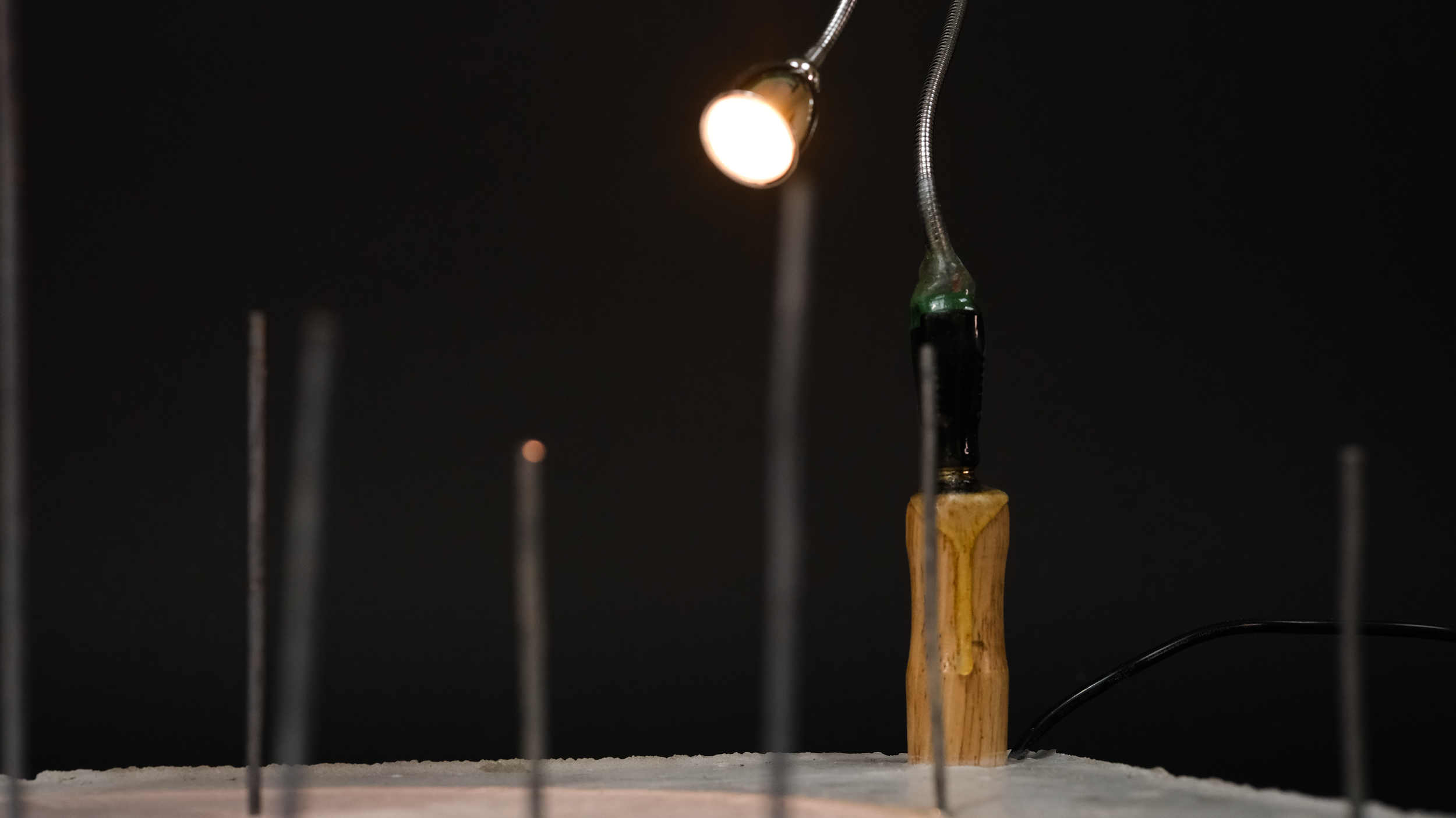
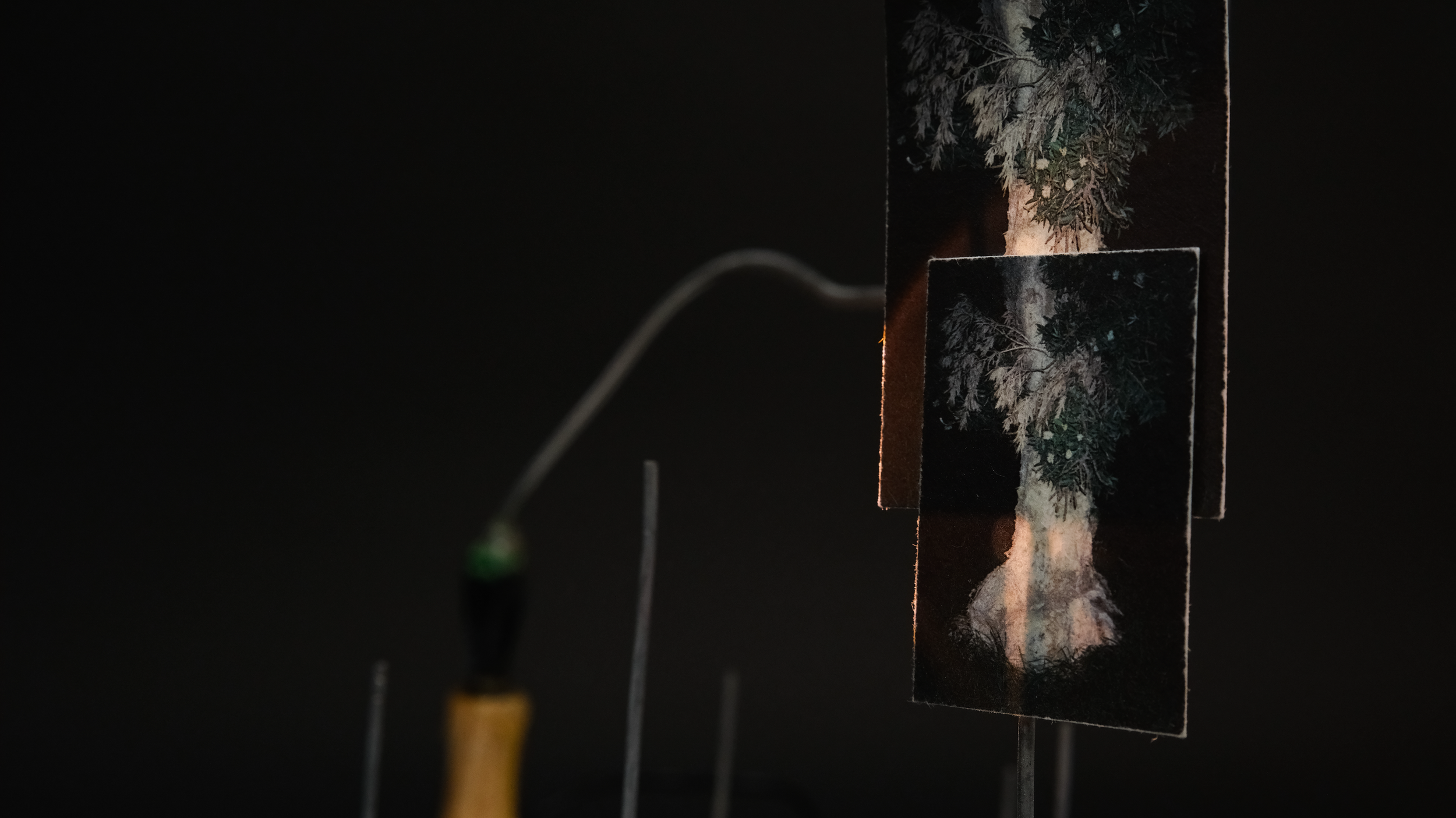
The work is intentionally crafted to appear fragile—almost unfinished or of low quality. However, this perceived fragility serves as a deeper commentary on the relationship between time, effort, and the perceived value of art. While the structure may seem delicate or even hastily constructed at first glance, the process behind its creation was anything but.
Every aspect of the installation demanded time, precision, and skill. The iron wire, seemingly unstructured, required meticulous soldering to form a cohesive structure. The lighting system involved carefully connecting electrical components, repurposing various found pieces to ensure functionality. Even the cement base, which appears raw and unrefined, underwent a controlled and deliberate process of mixing, setting, and curing.
This juxtaposition between effort and appearance challenges the viewer’s assumptions: Does an artwork’s value lie in its immediate visual impact, or in the unseen labor embedded within it? If something appears fragile or imperfect, does that diminish its worth, even when the process behind it was complex and intentional? By obscuring the traces of labor beneath an exterior that suggests fragility, this work asks whether time and effort alone are enough to validate art, or if perception ultimately dictates value.
